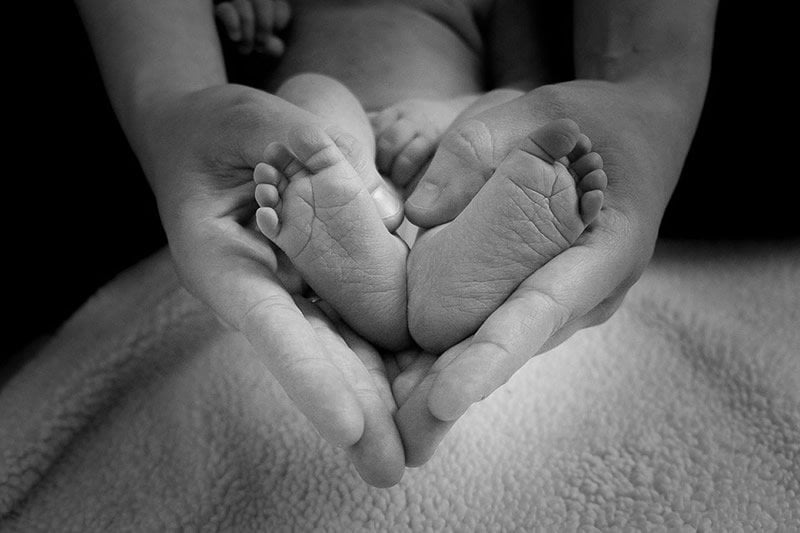Summary: Researchers release new evidence-based recommendations regarding the benefits and risks for breastfeeding mother and infant co-sleeping. The study reports safe bedsharing is possible, and existing evidence does not support the conclusion that co-sleeping in breastfed infants increases the risk for SIDS in the absence of known hazards.
Source: Mary Ann Liebert Inc
Leading experts representing The Academy of Breastfeeding Medicine (ABM) have released new evidence-based recommendations regarding the benefits and risks of bedsharing for mother-infant pairs who have initiated breastfeeding and are in home settings. The new protocol is published in Breastfeeding Medicine.
In “Bedsharing and Breastfeeding,” Peter Blair and colleagues cite published evidence to support the overall conclusion that close nighttime proximity facilitates breastfeeding duration and exclusivity. Safe bedsharing is possible and the existing evidence does not support the conclusion that bedsharing among breastfeeding infants causes sudden infant death syndrome (SIDS) in the absence of known hazards. Hazardous circumstances include sleeping with an adult on a sofa or armchair; sleeping next to an adult impaired by alcohol, medications, or illicit drugs; tobacco exposure; preterm birth; and never having initiated breastfeeding.
The protocol emphasizes that all parents should be educated on safe bedsharing, with the understanding that bedsharing is very common, and when bedsharing is unplanned, it carries a higher risk than planned bedsharing.

Arthur I. Eidelman, MD, Editor-in-Chief of Breastfeeding Medicine, states: “This is a most welcome balanced statement that emphasizes the positive value of safe bedsharing while properly delineating the clinical and environmental hazards that should be avoided.”
“Having conversations about safe bedsharing is important for removing stigma around the topic and for facilitating open and honest dialogue between parents and providers,” said Alison Stuebe, MD, president of the Academy of Breastfeeding Medicine.
Source:
Mary Ann Liebert Inc
Media Contacts:
Kathryn Ryan – Mary Ann Liebert Inc
Image Source:
The image is in the public domain.
Original Research: Closed access
“Bedsharing and Breastfeeding: The Academy of Breastfeeding Medicine Protocol #6, Revision 2019”. Peter S. Blair, Helen L. Ball, James J. McKenna, Lori Feldman-Winter, Kathleen A. Marinelli, Melissa C. Bartick, the Academy of Breastfeeding Medicine Michal Young, Larry Noble, Sarah Calhoun, Megan Elliott-Rudder, Laura Rachael Kair, Susan Lappin, Ilse Larson, Ruth A. Lawrence, Yvonne Lefort, NicoleXy Marshall, Katrina Mitchell, Catherine Murak, Eliza Myers, Sarah Reece-Stremtan, Casey Rosen-Carole, Susan Rothenberg, Tricia Schmidt, Tomoko Seo, Natasha Sriraman, Elizabeth K. Stehel, Adora Wonodi, Nancy Wight.
Breastfeeding Medicine doi:10.1089/bfm.2019.29144.psb.
Abstract
Bedsharing and Breastfeeding: The Academy of Breastfeeding Medicine Protocol #6, Revision 2019
Abstract
A central goal of the Academy of Breastfeeding Medicine is the development of clinical protocols for managing common medical problems that may impact breastfeeding success. These protocols serve only as guidelines for the care of breastfeeding mothers and infants and do not delineate an exclusive course of treatment or serve as standards of medical care. Variations in treatment may be appropriate according to the needs of an individual patient.
Purpose
Bedsharing promotes breastfeeding initiation,1 duration,2–7 and exclusivity.7,8 Medical and public health organizations in some countries recommend against bedsharing, citing concerns over increased risk of sleep-related infant death.9,10 However, bedsharing may only be a risk in hazardous circumstances as demonstrated by epidemiological study (Table 1).11 We aim to clarify the currently available evidence regarding the benefits and risks of bedsharing, and offer evidence-based recommendations that promote infant and maternal health through increased breastfeeding duration.12 The recommendations in this protocol apply to mother–infant dyads who have initiated breastfeeding and are in home settings, and are not intended for use in hospitals or birth centers.






